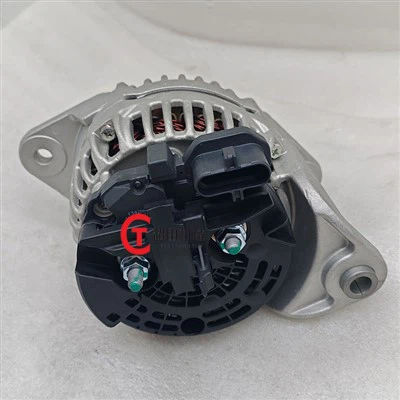Hey there! As a supplier of starter motors, I've been getting a ton of questions about how the solenoid in a starter motor works. So, I thought I'd break it down for you in a way that's easy to understand.
First off, let's talk about what a starter motor does. Its main job is to crank the engine to get it started. When you turn the key in your ignition, you're sending an electrical signal to the starter motor. And that's where the solenoid comes in.
The solenoid is like the brain and muscle of the starter motor system. It's an electromagnetic switch that has two main functions: to engage the starter motor's pinion gear with the flywheel ring gear and to send electrical power to the starter motor itself.
Let's dig a little deeper into how it all goes down. The solenoid is made up of a few key parts: a coil of wire (the electromagnet), a plunger, and a set of contacts. When you turn the ignition key, a small amount of electrical current flows through the ignition switch and into the solenoid's coil.
This electrical current creates a magnetic field around the coil. Just like with any magnet, this magnetic field attracts the plunger inside the solenoid. The plunger is connected to a shift fork, and as the plunger is pulled in by the magnetic field, the shift fork moves the pinion gear on the starter motor.
The pinion gear is then pushed out to mesh with the flywheel ring gear. This is a crucial step because it allows the starter motor to transfer its rotational force to the engine's crankshaft. Once the pinion gear is engaged with the flywheel, the engine can start turning over.
But that's not all the solenoid does. As the plunger moves, it also closes a set of heavy-duty contacts inside the solenoid. These contacts are connected to the vehicle's battery. When they close, they allow a large amount of electrical current to flow from the battery to the starter motor.
This high - current flow powers the starter motor, which spins at a high speed. The spinning starter motor then turns the engine's crankshaft through the engaged pinion and flywheel, and voila! Your engine starts up.
Once the engine starts running, the electrical current to the solenoid is cut off. Without the electrical current, the magnetic field in the solenoid's coil disappears. The plunger is then pushed back to its original position by a spring. As the plunger moves back, the pinion gear disengages from the flywheel ring gear, and the heavy - duty contacts inside the solenoid open, cutting off the power to the starter motor.
Now, let's talk about some of the starter motors we offer. We've got a great selection, like the E320D Excavator Starter Motor 272 - 4774 2724774. This starter motor is designed specifically for E320D excavators, and its solenoid is built to handle the tough conditions these machines operate in.
Another popular option is the 4HK1 Engine Starting Motor. It's engineered to work seamlessly with 4HK1 engines, and the solenoid ensures reliable starting every time.
And if you're looking for a starter motor for a 1004 or 1006 engine, our 24V 11T Starter Motor T400268 for 1004 1006 Engine is a great choice. The solenoid in this motor is optimized for these engines, providing efficient and consistent starting performance.
We understand that having a reliable starter motor is crucial for your vehicles or equipment. That's why we make sure all our starter motors, including the solenoids, are of the highest quality. We source the best materials and use advanced manufacturing techniques to ensure durability and performance.
If you're in the market for a new starter motor or have any questions about how they work, don't hesitate to reach out. Whether you're a mechanic, a fleet manager, or just someone looking to replace a faulty starter motor in your own vehicle, we're here to help. We can provide you with detailed information about our products, offer technical support, and help you find the right starter motor for your specific needs.


Contact us today to start the conversation. We're eager to work with you and ensure you get the best starter motor solution for your situation.
References
- Automotive Technology: A Systems Approach by James D. Halderman
- Motor Vehicle Electrical and Electronic Systems by William H. Crouse and Donald L. Anglin






